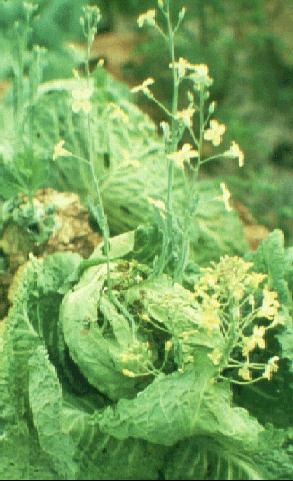Cabbage General Information
Origin of the cabbage
Cabbage is from a group of plants known as the cole crops. The word "cole" derives from the Middle English word "col". The Romans called these crops "caulis", and the Greeks called them "kaulion". All these words mean "stem". This group of plants includes cabbage, cauliflower, broccoli, kale, collards, kohlrabi, and Brussels sprouts. Wild cole crops are found growing along the Mediterranean and Atlantic coasts of Europe. Cabbages and kale presumably originated in Western Europe; cauliflower and broccoli in the Mediterranean region. Cabbages and kale were the first of the cole crops to be domesticated, probably about 2,000 years ago. Before these crops were domesticated they were collected from the wild and used primarily as medicinal herbs. The other forms of the cole crops were domesticated at later dates, and Brussels sprouts are the most recent crop, having come into existence less than 500 years ago.
Taxonomy

Cole crops are from the family Cruciferae, a large family which contains many vegetables. It is also called the mustard family. The family name comes from the Latin word for "cross" and was given to members of this family because the flowers are cross-shaped. Cole crops are herbaceous, biennial, dicotyledonous plants specifically from the genus and species, Brassica oleracea. There are many different groups within this species:
- acephala - kale, collards
- botrytis - cauliflower
- capitata - cabbage
- gemmifera - Brussels sprouts
- gongylodes - kohlrabi
- italica - sprouting broccoli
Cauliflower, cabbage, broccoli, and Brussels sprouts all have similar cultural requirements, although the climatic range differs. The different groups have different environmental requirements for growth. These crops are grown as summer crops in the North and winter crops in the extreme south. In the intermediate zone often two crops are grown each year.
Nutritive Value
Cabbage is fairly low in calories, but is also relatively low in protein content. It is a good source of many minerals, particularly potassium, and is also relatively high in vitamins A and C. Green cultivars tend to have more vitamin A than red cabbage cultivars, and savoy types tend to have more vitamin A than smooth types.
Back to the cabbage page.
